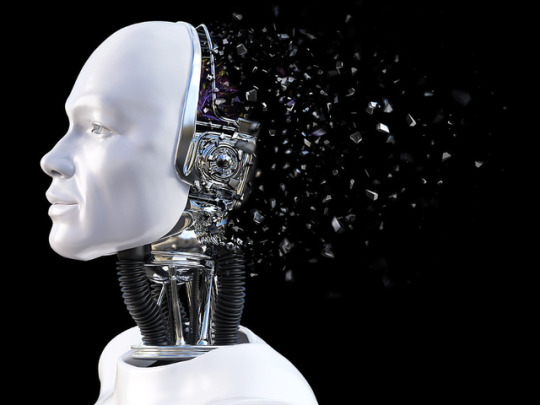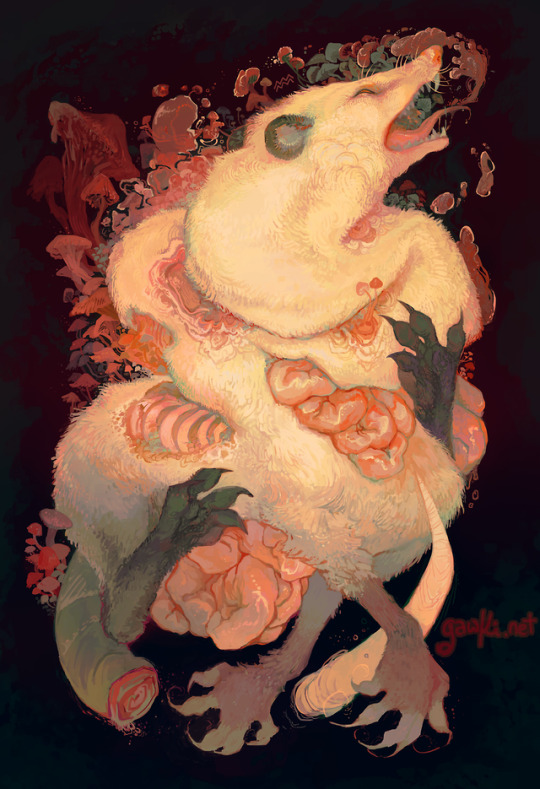Photo





LJS 478 - [Astronomical anthology]
This manuscript is a collection of astronomical treatises:
Muḥammad ibn Aḥmad al-Bīrūnī’s Kitāb fī istīʻāb al-wujūh al-mumkina fī ṣanʻat al-asṭurlāb (On the construction of the astrolabe);
two treatises on “crab and drum” astrolabes now attributed to the 10th-century astronomer Nasṭūlus (or Basṭūlus);
a treatise on an instrument for finding the direction of Mecca;
a treatise on the ecliptic;
a treatise on the compass.
It was written in Persia or Anatolia, in A.H. 625 (1228 CE).
Click here to read more about it, or here for the facsimile!
84 notes
·
View notes
Text
The neurobiology of social aggression
Duke-NUS researchers have discovered that a growth factor protein, called brain-derived neurotrophic factor (BDNF), and its receptor, tropomyosin receptor kinase B (TrkB) affects social dominance in mice. The research has implications for understanding the neurobiology of aggression and bullying.
“Humans and rodents are social animals. Our every interaction follows rules according to a social hierarchy. Failure to navigate this hierarchy can be detrimental.” explained senior author A/Prof. Hyunsoo Shawn Je, from the Neuroscience and Behavioural Disorders Signature Research Programme at Duke-NUS Medical School. “Our paper may be the first to demonstrate that specific molecular signalling pathways in specialised nerve cells, in a particular location in the brain, are important for the balanced navigation of social hierarchies.”
Difficulties in navigating these hierarchies can lead to problems like aggression and bullying. “Given the heavy societal cost of bullying and aggression, understanding the biological causes is a step towards their effective prevention and treatment,” A/Prof. Je added.
Activity within the brain is mediated by circuits made up of excitatory neurons, which ramp up activity, and GABA-ergic interneurons, which inhibit and quiet the excitatory activity. Previous studies have shown that BDNF-TrkB signalling is important for the maturation of GABA-ergic interneurons and the development of nerve circuits in the brain. But researchers have not been able to pinpoint the behavioural consequences of disrupted BDNF-TrkB signalling.
A/Prof. Je’s team generated transgenic mice in which the TrkB receptor was removed specifically in the GABAergic interneurons in the area of the brain regulating emotional and social behaviour, known as the corticolimbic system. The transgenic mice exhibited unusual aggressive behaviour when housed together with normal mice. To understand the origin of this behaviour, the team conducted behavioural tests. They found that the mice were not being aggressive to protect their territory. They were also not being aggressive because they were stronger; the transgenic mice were injured more than other mice during acts of aggression. Instead, their aggressive behaviour was a result of increased fighting for status and dominance over other mice in the group.
The researchers found that due to the loss of BDNF-TrkB, GABA-ergic interneurons in these transgenic mice supplied weaker inhibition to surrounding excitatory cells, which became overactive. They proceeded to shut down excitatory neurons in a specific area of the transgenic mice brains, which re-established the “excitatory/inhibitory” balance and which “instantaneously reversed the abnormal social dominance”, says Duke-NUS post-doctoral research fellow Dr. Shawn Pang Hao Tan, who was the first author of the paper.
A significant amount of research has focused on the roles of family and peer networks on aggressive behaviour. This study, together with other recently published findings, demonstrates that genetic and biological factors can play an unexpected role in social behaviours, said Je.
116 notes
·
View notes
Photo



A pair of silver mounted miquelet pistols from the Caucasus, mid 19th century.
from Hermann Historica
259 notes
·
View notes
Photo










This Pride don’t forget your brothers and sisters fighting for their rights all over the world.
209K notes
·
View notes
Photo

Study: Cesarean-Born Mice Show Altered Patterns Of Brain Development
Cesarean-born mice show altered patterns of cell death across the brain, exhibiting greater nerve cell death than vaginally delivered mice in at least one brain area, a finding by Georgia State University researchers that suggests birth mode may have acute effects on human neurodevelopment that may lead to long-lasting changes in the brain and behavior.
The team of neuroscientists examined the effect of birth mode (vaginal delivery versus Cesarean section) on neuronal cell death, an important process that reshapes neural circuits early in development. This process, which takes place in mice during the first week after birth, also occurs in humans. Their study’s findings are published in the journal Proceedings of the National Academy of Sciences.
With the advent of modern medicine, Cesarean births, also known as C-sections, are becoming a widespread practice around the world. In the United States, C-sections account for about 30 percent of births every year, and many of these are elective. Cesarean births have been linked to behavioral effects in the offspring, which suggests effects on the brain, but human studies are confounded by the medical complications, altered birth timing and maternal factors often associated with Cesarean delivery.
Dr. Alexandra Castillo-Ruiz, Dr. Nancy Forger and their students in the Neuroscience Institute at Georgia State addressed these limitations in a carefully controlled study in mice by examining the brains of offspring before and after a vaginal or Cesarean birth up to weaning age, carefully matching pups for time of delivery.
They found that vaginally delivered mice had a decrease in cell death across the brain within hours of birth, but this did not occur in Cesarean-born offspring. The most dramatic difference was seen in a region of the hypothalamus that regulates the stress response and brain-immune interactions. The greater cell death in Cesarean-delivered newborns was associated with a reduction in the number of neurons in at least one brain area and was also associated with altered behavior in a maternal separation test.
Birth mode did not affect general measures of development such as total brain size or day of eye-opening in juvenile mice. However, the authors did observe increased weight gain in Cesarean-born mice at weaning age, which is consistent with clinical reports of higher body mass index in humans born by C-section.
131 notes
·
View notes
Photo

Oscillations provide insights into the brain’s navigation system
The brain creates a map of our environment, which enables reliable spatial navigation. The Nobel Prize was awarded in 2014 for research into how this navigation system works at the cellular level. Researchers at the Medical Center – University of Freiburg, Ruhr-Universität Bochum, and the Chinese Academy of Sciences in Beijing have now shown that the characteristics of this navigation system are also present in brain oscillations that can be measured using depth electrodes in the human brain. The possibility of testing the neuronal navigation system in this way may open up new approaches for the early diagnosis of Alzheimer’s disease. A worsening sense of orientation is one of the first signs of the disease. The researchers published the results in the journal Current Biology on 11 October 2018.
Insights into neural activity
Alzheimer’s disease leads to the symptom of spatial disorientation at an early stage in the course of the disease. “The loss of spatial orientation is a major limitation in everyday life for people suffering from Alzheimer’s disease,” says shared first-author Dr. Lukas Kunz, a scientist at the Epilepsy Centre in the Department of Neurosurgery at the Medical Center – University of Freiburg. The disorientation may be caused by impairment of the entorhinal cortex. This brain structure is one of the first to be affected by Alzheimer’s disease – and this is where so-called grid cells are located. Together with place cells, these cells form fundamental components of the brain’s navigation system.
The scientists from Freiburg, Bochum, and Beijing have now been able to show that brain oscillations can be used to draw conclusions about the activity of grid cells. They recorded brain activity in epilepsy patients using depth electrodes from the entorhinal cortex while the participants were moving in a virtual environment. This was possible because the electrodes had to be placed in the brain anyway in preparation for epilepsy surgery.
Long-term goal: earlier Alzheimer’s diagnosis
In the brain activity, they found clear indications that important characteristics of grid cells can also be measured at the network level. “We have found a way to measure the activity of grid cells indirectly using oscillations. Over the long term, this may lead to specific tests of impaired functionality of the neuronal navigation system, such as in the context of the onset of Alzheimer’s disease,” says Kunz. A very early diagnosis of Alzheimer’s might then enable timely therapy with drugs that would otherwise be ineffective.
46 notes
·
View notes
Photo

Artificial Intelligence Helps Reveal How People Process Abstract Thought
As artificial intelligence becomes more sophisticated, much of the public attention has focused on how successfully these technologies can compete against humans at chess and other strategy games. A philosopher from the University of Houston has taken a different approach, deconstructing the complex neural networks used in machine learning to shed light on how humans process abstract learning.
“As we rely more and more on these systems, it is important to know how they work and why,” said Cameron Buckner, assistant professor of philosophy and author of a paper exploring the topic published in the journal Synthese. Better understanding how the systems work, in turn, led him to insights into the nature of human learning.
Philosophers have debated the origins of human knowledge since the days of Plato – is it innate, based on logic, or does knowledge come from sensory experience in the world?
Deep Convolutional Neural Networks, or DCNNs, suggest human knowledge stems from experience, a school of thought known as empiricism, Buckner concluded. These neural networks – multi-layered artificial neural networks, with nodes replicating how neurons process and pass along information in the brain – demonstrate how abstract knowledge is acquired, he said, making the networks a useful tool for fields including neuroscience and psychology.
In the paper, Buckner notes that the success of these networks at complex tasks involving perception and discrimination has at times outpaced the ability of scientists to understand how they work.
While some scientists who build neural network systems have referenced the thinking of British philosopher John Locke and other influential theorists, their focus has been on results rather than understanding how the networks intersect with traditional philosophical accounts of human cognition. Buckner set out to fill that void, considering the use of AI for abstract reasoning, ranging from strategy games to visual recognition of chairs, artwork and animals, tasks that are surprisingly complex considering the many potential variations in vantage point, color, style and other detail.
“Computer vision and machine learning researchers have recently noted that triangle, chair, cat, and other everyday categories are so difficult to recognize because they can be encountered in a variety of different poses or orientations that are not mutually similar in terms of their low-level perceptual properties,” Buckner wrote. “… a chair seen from the front does not look much like the same chair seen from behind or above; we must somehow unify all these diverse perspectives to build a reliable chair-detector.”
To overcome the challenges, the systems have to control for so-called nuisance variation, or the range of differences that commonly affect a system’s ability to identify objects, sounds and other tasks – size and position, for example, or pitch and tone. The ability to account for and digest that diversity of possibilities is a hallmark of abstract reasoning.
The DCNNs have also answered another lingering question about abstract reasoning, Buckner said. Empiricists from Aristotle to Locke have appealed to a faculty of abstraction to complete their explanations of how the mind works, but until now, there hasn’t been a good explanation for how that works. “For the first time, DCNNs help us to understand how this faculty actually works,” Buckner said.
He began his academic career in computer science, studying logic-based approaches to artificial intelligence. The stark differences between early AI and the ways in which animals and humans actually solve problems prompted his shift to philosophy.
Less than a decade ago, he said, scientists believed advances in machine learning would stop short of the ability to produce abstract knowledge. Now that machines are beating humans at strategic games, driverless cars are being tested around the world and facial recognition systems are deployed everywhere from cell phones to airports, finding answers has become more urgent.
“These systems succeed where others failed,” he said, “because they can acquire the kind of subtle, abstract, intuitive knowledge of the world that comes automatically to humans but has until now proven impossible to program into computers.”
141 notes
·
View notes
Photo


Play Dead
\\
The idea of “if roadkill could seek revenge” is still on my mind over a year later.
10K notes
·
View notes
Photo


By Guy Lacroix
At this point the alpha male was protecting his prey, fending off four wolves at the same time; his patience was wearing thin.
An amazing afternoon with the wolves.
Photographed at Parc Oméga, Montebello, Québec, Canada.
“The wolf tends to live in packs. Each pack is typically made up of an alpha pair (the dominant male and female) and their cubs, as well as offspring from previous years. Within the pack, there is a clear hierarchy that determines, among other things, which animals eat first. Generally, only the alpha pair mates, but every member of the pack helps raise the new pups. Lesser-ranked wolves are often designated “babysitters” while the rest of the pack is out hunting. Grey wolves usually mate for life.”
The Royal Canadian Geographical Society
978 notes
·
View notes
Photo










The World’s Worship in Stone: Temple, Cathedral, and Mosque
One Hundred and Fifty Engravings From the Best Artists
With Descriptive Text
By M. M. Ripley
FIRST EDITION
VICTORIAN BINDING
ILLUSTRATED WITH 150 ENGRAVINGS
Publisher: Estes and Lauriat, Boston
Copyright: 1879
BUY ON ETSY
19 notes
·
View notes
Photo

A pair of silver mounted Turkish flintlock pistols, dated 1802.
from Hermann Historica
147 notes
·
View notes


















